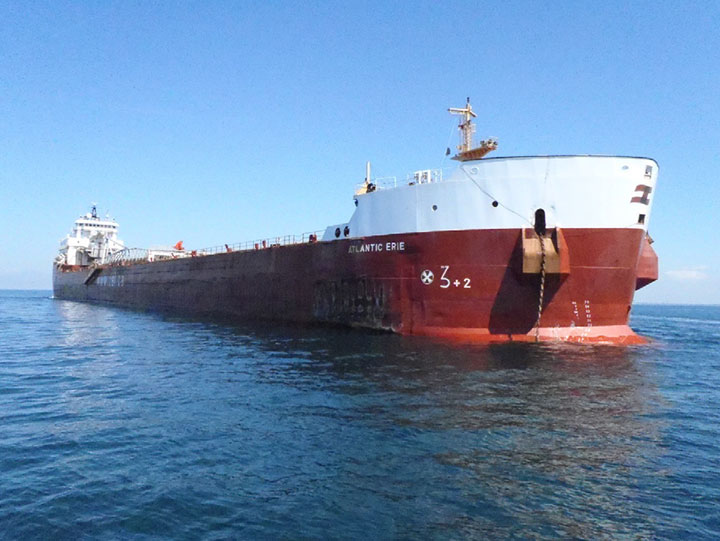In its investigation report (M15C0006) released on Feb 25, the Transportation Safety Board of Canada (TSB) determined that ineffective visual navigation leading to the loss of situational awareness contributed to the January 2015 grounding of bulk carrier Atlantic Erie in Îles de la Madeleine, Quebec. There were no injuries or pollution, but the vessel sustained damage.
On 11 January 2015, the bulk carrier Atlantic Erie ran aground southeast of the Havre de la Grande Entrée outer channel while outbound from Mines Seleine in Îles de la Madeleine, Quebec. The vessel was partially off-loaded, deballasted, and refloated with the assistance of tugs on 14 January 2015.

The investigation determined that the bridge team used buoys as the primary method for navigating and did not use all available navigational equipment to verify and monitor the vessel’s position. Because the prevailing environmental conditions affected the accuracy of the buoys’ charted positions, the team lost awareness of the vessel’s actual position within the navigation channel. The bridge team was also using an outdated electronic chart which no longer accurately displayed the channel or buoy positions. This likely led the master to initiate a turn in the channel later than intended, resulting in not having enough sea room to complete the manoeuvre and the vessel running aground.
Effective safety management requires organizations to be committed to operating safely, to be cognizant of the risks involved in their operations, and to manage those risks. On the Atlantic Erie, the safety management system set out requirements for passage planning and included a standard passage planning template and checklists as tools to help mitigate the risks of navigational errors. Although a passage plan had been developed for the occurrence voyage, it was missing certain information. Further, several steps to ensure safe navigation had not been done despite being marked as complete on the checklist.
The TSB has identified safety management and oversight as a Watchlist issue. The Board is calling on Transport Canada (TC) to oversee companies’ safety management processes, since some transportation companies are not managing their safety risks effectively.
Following the occurrence, Canada Steamship Lines (CSL Group Inc.) provided the entire fleet with new electronic charts. Additionally, the company provided Human Element Leadership Management (HELM) training to several masters, chief officers, chief and second engineers, and committed to delivering the training to all senior officers in the fleet by winter 2016.
Source: TSB